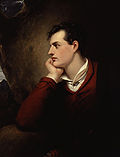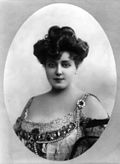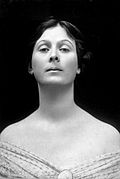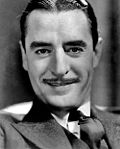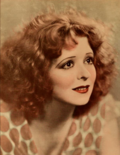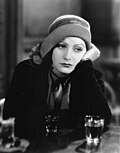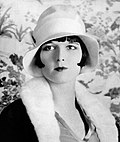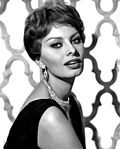
Corona Australis is a constellation in the Southern Celestial Hemisphere. Its Latin name means "southern crown", and it is the southern counterpart of Corona Borealis, the northern crown. It is one of the 48 constellations listed by the 2nd-century astronomer Ptolemy, and it remains one of the 88 modern constellations. The Ancient Greeks saw Corona Australis as a wreath rather than a crown and associated it with Sagittarius or Centaurus. Other cultures have likened the pattern to a turtle, ostrich nest, a tent, or even a hut belonging to a rock hyrax.

World War II, also known as the Second World War, was a global war that lasted from 1939 to 1945. The vast majority of the world's countries—including all the great powers—eventually formed two opposing military alliances: the Allies and the Axis. A state of total war emerged, directly involving more than 100 million people from more than 30 countries. The major participants threw their entire economic, industrial, and scientific capabilities behind the war effort, blurring the distinction between civilian and military resources. World War II was the deadliest conflict in human history, marked by 70 to 85 million fatalities. Tens of millions of people died during the conflict due to genocides, premeditated death from starvation, massacres, and disease. Aircraft played a major role in the conflict which included the use of terror bombing, strategic bombing and the only use of nuclear weapons in war.

Cary Grant was an English-born American actor, who was one of classic Hollywood's definitive leading men. He is known for his transatlantic accent, debonair demeanor, light-hearted approach to acting, and sense of comic timing.

7th Heaven is a 1927 American silent romantic drama directed by Frank Borzage, and starring Janet Gaynor and Charles Farrell. The film is based upon the 1922 play Seventh Heaven, by Austin Strong and was adapted for the screen by Benjamin Glazer. 7th Heaven was initially released as a standard silent film in May 1927. On September 10, 1927, Fox Film Corporation re-released the film with a synchronized Movietone soundtrack with a musical score and sound effects.
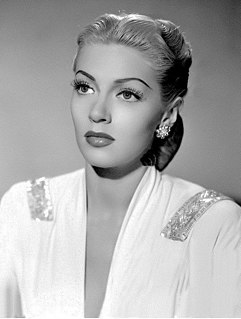
Lana Turner was an American actress. Over the course of her nearly 50-year career, she achieved fame as both a pin-up model and a film actress, as well as for her highly publicized personal life. In the mid-1940s, she was one of the highest-paid actresses in the United States, and one of Metro-Goldwyn-Mayer's (MGM) biggest stars, with her films earning the studio more than $50 million during her 18-year contract with them. Turner is frequently cited as a popular culture icon of Hollywood glamour and a screen legend of classical Hollywood cinema.

The Fountainhead is a 1943 novel by Russian-American author Ayn Rand, her first major literary success. The novel's protagonist, Howard Roark, is an individualistic young architect who designs modernist buildings and refuses to compromise with an architectural establishment unwilling to accept innovation. Roark embodies what Rand believed to be the ideal man, and his struggle reflects Rand's belief that individualism is superior to collectivism.

Mary Louise Brooks, known professionally as Louise Brooks, was an American film actress and dancer during the 1920s and 1930s. She is regarded today as a Jazz Age icon and as a flapper sex symbol due to her bob hairstyle that she helped popularize during the prime of her career.

Sexual objectification is the act of treating a person solely as an object of sexual desire. Objectification more broadly means treating a person as a commodity or an object without regard to their personality or dignity. Objectification is most commonly examined at the level of a society, but can also refer to the behavior of individuals and is a type of dehumanization.

Pola Negri was a Polish stage and film actress and singer who achieved worldwide fame during the silent and golden eras of Hollywood and European film for her tragedienne and femme fatale roles and was acknowledged as a sex symbol.

The Sands Hotel and Casino was a historic hotel and casino on the Las Vegas Strip in Nevada, United States, that operated from 1952 to 1996. Designed by the architect Wayne McAllister, with a prominent 56-foot (17 m) high sign, the Sands was the seventh resort to open on the Strip. During its heyday, the Sands was the center of entertainment and "cool" on the Strip, and hosted many famous entertainers of the day, most notably the Rat Pack and Jerry Lewis.

Sängerfest, also Sängerbund-Fest, Sängerfeste, or Saengerfest, meaning singer festival, is a competition of Sängerbunds, or singer groups, with prizes for the best group or groups. Such public events are also known as a Liederfest, or song festival. Participants number in the hundreds and thousands, and the fest is usually accompanied by a parade and other celebratory events. The sängerfest is most associated with the Germanic culture. Its origins can be traced back to 19th century Europe. Swiss composer Hans Georg Nägeli and educator Carl Friedrich Zelter, both protégés of Swiss educator Johann Heinrich Pestalozzi, established sängerbunds to help foster social change throughout Germany and Prussia. University students began to choose the art form as an avenue for political statements. As the sängerfest concept gained popularity and spread around the world, it was adapted by Christian churches for spiritual worship services. European immigrants brought the tradition in a non-political form to the North American continent. In the early part of the 20th century, sängerfest celebrations drew devotees in the tens of thousands, and included some United States presidents among their audiences. Sängerbunds are still active in Europe and in American communities with Germanic heritage.
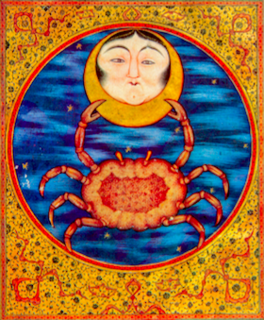
Cancer (♋︎) is the fourth astrological sign in the Zodiac, originating from the constellation of Cancer. It spans from 90° to 120° celestial longitude. Under the tropical zodiac, the Sun transits this area between approximately June 22 and July 22, and under the sidereal zodiac, the Sun transits this area between approximately July 21 and August 9.
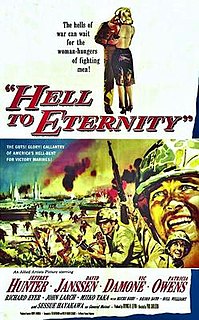
Hell to Eternity is a 1960 American World War II film starring Jeffrey Hunter, David Janssen, Vic Damone and Patricia Owens, directed by Phil Karlson. This film biopic is about the true experiences of Marine hero Pfc. Guy Gabaldon, a Los Angeles Hispanic boy raised in the 1930s by a Japanese American foster family, and his heroic actions during the Battle of Saipan. Sessue Hayakawa played the role of Japanese commander at Saipan.
An auteur is an artist, usually a film director, who applies a highly centralized and subjective control to many aspects of a collaborative creative work; in other words, a person equivalent to an author of a novel or a play. The term commonly refers to filmmakers or directors with a recognizable style or thematic preoccupation. Auteurism originated in the French film criticism of the late 1940s as a value system that derives from the film criticism approach of André Bazin and Alexandre Astruc—dubbed auteur theory by the American critic Andrew Sarris. The theory found its official name in 1955 articles by François Truffaut. He defended directors Alfred Hitchcock and Howard Hawks, proposing to see their works as a whole, with recurring themes and obsessions.

Benny Thau was an American businessman who became vice-president of the Hollywood film studio Metro-Goldwyn-Mayer (MGM), a subsidiary of the Loew's theater chain. From 1928 he was in charge of casting, in the business of discovering and developing talented performers. He was known for his quiet and calming influence with often temperamental stars. Towards the end of his career he was head of the studio from 1956 to 1958.

American actor and producer Michael Douglas began his film career with a brief uncredited role in Cast a Giant Shadow (1966). In the same year he played a small role in the play Bedford Forrest. His performance in Hail, Hero! (1969) earned him a nomination for the Golden Globe Award for Most Promising Male Newcomer. He won the 1971 Theatre World Award for Pinkville. During 1972–76, he played the lead role in the TV series The Streets of San Francisco. In 1975, Douglas produced One Flew Over the Cuckoo's Nest which won the Academy Award for Best Picture, Golden Globe for Best Picture and BAFTA Award for Best Film.
The Jazz Singer is a play written by Samson Raphaelson, based on his short story "The Day of Atonement". Producers Albert Lewis and Max Gordon staged it on Broadway, where it debuted at the Fulton Theatre in 1925. A highly influential movie adaptation was released in 1927.

Since her rise to fame in the 1940s, American film actress Lana Turner has appeared and been referenced in numerous works across literature, film, art, and music. Her glamorous persona and publicized personal troubles have contributed to her recurring prevalence in popular culture.


